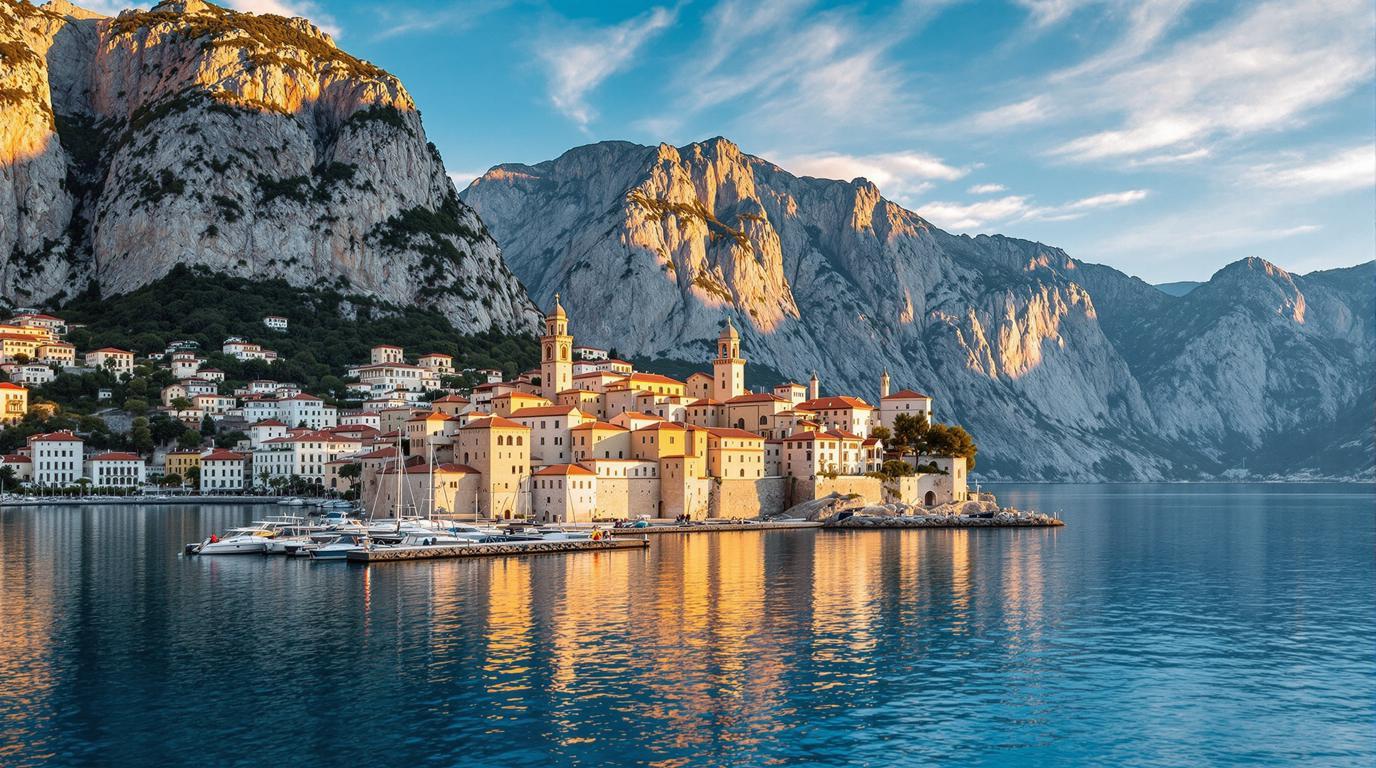The first time I stepped onto Kotor’s cobblestones, the medieval walls rising 1,350 feet above me like stone sentinels, I wasn’t prepared for how this Montenegrin jewel would seize my imagination. Tucked into a secluded corner of Europe’s southernmost fjord, this fortified city doesn’t just showcase history—it whispers secrets from centuries past through every limestone alley and weathered doorway. While cruise ships deposit day-trippers at the main gate, I discovered the true enchantment begins precisely when they leave.
Where the Adriatic meets ancient stone in Montenegro’s hidden harbor
Founded in 168 BCE and fortified during Venetian rule, Kotor’s UNESCO-protected Old Town presents a labyrinth of interconnected squares and narrow passages that feel remarkably untouched by time. The city sits dramatically wedged between towering limestone mountains and the deepest natural harbor in the eastern Mediterranean.
“We don’t measure distances in kilometers here, but in centuries,” explains Marko, a local historian whose family has lived within these walls for seven generations. “Each stone has witnessed empires rise and fall—Illyrian, Roman, Byzantine, Venetian—yet Kotor remains.”
Unlike this car-free Croatian island just 45 minutes from Dubrovnik, Kotor balances its historical presence with subtle vitality that reveals itself most authentically after sunset.
Discovering the soul of the bay beyond guidebook pages
The nocturnal awakening of St. Luke’s Square
When evening descends and cruise passengers retreat, St. Luke’s Square transforms. This unassuming courtyard harbors the 12th-century Church of St. Luke—unusual for containing both Catholic and Orthodox altars—but reveals its true character after 9 PM. Local musicians gather spontaneously beneath centuries-old stone arches, their melancholic Balkan melodies drawing residents from nearby apartments who bring homemade rakija to share with appreciative visitors.
Here, under stars framed by medieval walls, I found myself sharing stories with three generations of a Kotor family, our laughter echoing against stones that have witnessed countless such gatherings across the centuries.
The forgotten fortress trail above the walls
While tourists dutifully climb the 1,350 steps of Kotor’s defensive walls, locals directed me to the unmarked shepherd’s path beginning behind the Church of Our Lady of Remedy. This overgrown trail winds through abandoned Austrian fortifications from the 1800s, offering solitude and panoramic views that surpass those from the crowded main fortifications.
At dawn, I had the crumbling stone outposts entirely to myself, watching fishing boats create ripples across the bay’s glassy surface. The morning light cast the surrounding limestone mountains in an ethereal pink glow that no photograph could properly capture.
Savoring the authentic flavors of Montenegro’s coastal heritage
Beyond the tourist restaurants with multilingual menus lies Tanjga, a family-run butcher shop and eatery where three generations work side-by-side preparing traditional Montenegrin rostilj (grilled meats). Locals line up for their pljeskavica—a seasoned meat patty stuffed with kajmak cheese that puts ordinary burgers to shame. For eight euros, I received a feast served on homemade bread with ajvar (roasted red pepper spread) and a glass of Vranac, Montenegro’s indigenous red wine.
Like medieval villages that have preserved their authentic character, Kotor’s culinary traditions remain blissfully unchanged by tourism’s influence.
Essential insights for experiencing Kotor’s true character
Timing your visit for authenticity
Visit between late April and early June to experience perfect temperatures without summer crowds. The bay remains swimmable while the steep hiking trails aren’t yet scorched by Mediterranean heat. October offers similar advantages with the added bonus of wild pomegranates ripening along mountain paths.
If possible, spend at least one night within the Old Town walls. When cruise ships depart around 5 PM, the true character of Kotor emerges as locals reclaim their streets.
Venturing beyond the walls
The ancient village of Perast, just 20 minutes north by local bus (€1.50), offers Baroque elegance without Kotor’s crowds. From there, €5 boat rides reach the artificial island of Our Lady of the Rocks, where a small museum houses artifacts that rival historic sites with untouched cultural treasures—including a tapestry embroidered with the hair of a devoted woman who waited 25 years for her sailor husband’s return.
Reflections from the bay’s ancient heart
As moonlight silvered the bay on my final evening, casting the town walls in dramatic shadow, I understood why this place has inspired poets and conquerors alike. In Kotor, the past doesn’t simply linger—it lives and breathes alongside the present, inviting travelers to become temporary citizens of its enduring story rather than mere spectators of its beauty.
